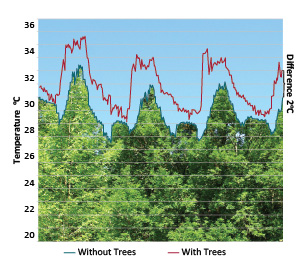Irons and washing machines
Smart clothing
You may not realise it, but doing your laundry is one of the biggest energy drainers at home. It requires a lot of energy to tumble/ heat the water used to wash your clothes and even more energy to dry it!
The quest for the best
Tips for purchasing good irons
- No matter how tedious and cumbersome it may be, yet washing and ironing are essential.
- Steam – smoothens out wrinkles. Check that the water reservoir is easy to fill.
- Non-stick coated finish or stainless steel soleplate – easy gliding
- Swivel cord base – better handling
- Variable heat /fabric setting
- Use a thermostatically controlled iron that switches itself off when the correct temperature is reached.
Tips for purchasing good washing machines
- Semi-automatic to fully automatic machines use 230 to 725 W. a fully automatic machine, whether loaded completely or partially, will run for 30 – 45 minutes completing all the operations and typically washing 4.5 – 5 kg. But a semi-automatic machine has a run time of about 16 minutes and can wash 3 – 5 kg. A washing machine with the capacity of 5 – 6 kg per wash is a good unit for a family of four.
- Buy a front loading washing machine. Their increased capacity makes it possible to do a larger loads at once.
- Buy a washing machine that does not have a central agitator. Agitators burn a lot of energy during a wash cycle. Some top loading models may have these.
Ironing
- Start at the very beginning. Opt to purchase clothes that need little or no ironing.
- Iron in the bedroom. You can use your bed to sort out laundry. Have hangers close at hand.
- Iron all clothes at once, starting from delicate ones to tough cottons, increasing temperatures as you proceed.
- Lay a piece of thin aluminium foil under the ironing board cover. The foil will reflect heat, so you will actually iron from both sides at once. Progress from garments needing the lowest temperature to the highest.
- Iron double thickness fabric on the inside first and then the outside.
- To avoid flattening embroidery/ eyelets, iron them facedown on a thick towel
- Use distilled water in steam irons, it will prolong its life.
- Clogged steam irons don’t deliver enough steam. Prevent the steam vents being clogged. Follow manufacturer’s instructions.
- Iron a fresh banana leaf to clean the soleplate. Remove residues from vents with cotton swabs or pipe cleaners. Do not use sharp objects.
- Rest the iron surface vertically, while ironing is in progress.
Washing machines
Semi-automatic to fully automatic machines use 230 to 725 W. a fully automatic machine, whether loaded completely or partially, will run for 30 – 45 minutes completing all the operations and typically washing 4.5 – 5 kg. but a semi-automatic machine has a run time of about 16 minutes and can wash 3 – 5 kg.

Know the following
- Look for a washing machine with more than one water fill-level so, that if the load is small, the water level can be adjusted sufficiently.
- A washing machine that uses relatively less water will prove to be the most economical in the long run, and a machine that gives you a choice of cycles is also an advantage.
- Machines with heaters installed in them consume more power for heating water.
- Do not under load the machine. Even of the machines are partially loaded, the energy consumed will be the same as that of a fully loaded one.
- Avoid using the dryer, as it consumes substantial energy. For example, the dryer may grab 5,000 W, whereas the washing machine only uses 550 W. Opt to dry clothes in the sun. operating dryers require more energy
- Hand clothes inside out to avoid discolouration.
- Chose a washing cycle depending on how dirty and soiled the clothes are. Shorter cycles consume less power. Sort the items according to the cycle they need.
- Clean the lint filter after use each time. A clean filter ensures greater efficiency.
